Lisinopril is one of the most commonly used medications for treating hypertension. Hypertension or elevated blood pressure is one of the most common diseases encountered in patients and a major contributor to the global health burden. Before use, all patients should be familiar with the spectrum of side effects associated with Lisinopril. It is believed that elevated blood pressure affects 30-45% of adults in the United States and more than one billion individuals worldwide. This is where Lisinopril medication comes into play.
Table Of Contents:
lt is a common generic medication belonging to a group of drugs known as the Angiotensin-Converting Enzyme Inhibitors (ACEIs). ACEIs mediate their antihypertensive effects by inhibiting one of the steps in the Renin-Angiotensin-Aldosterone Axis. This article will touch upon the basic pharmacology of the Lisinopril pill, as well as rather uncommon possibilities that are Lisinopril abuse and the subsequent Lisinopril addiction.
What Is Lisinopril?
Lisinopril is a generic drug belonging to a group of medications known as Angiotensin-Converting Enzyme Inhibitors (ACEIs) treating hypertension. This medication was first developed by the pharmaceutical company Merck and was approved for use by the United States Food and Drug Administration (FDA) back in 1987. From then on, it has been available as one of several primary preferred agents used for the initial management of hypertension/elevated blood pressure as well as an adjunct therapeutic agent in various other conditions such as Congestive Heart Failure (CHF), ST-segment elevation Myocardial Infarction (STEMI), and various types of Proteinuric Chronic Kidney Diseases (CKD), especially if related to Diabetes mellitus.
Lastly, this medication is simply a prescription drug that is NOT a controlled substance either in the United States or anywhere else, as it is not considered to have the potential for abuse or dependence.
Lisinopril Drug Class
Lisinopril is an antihypertensive medication, or to put it in more simplified terms, a medication that is used to lower blood pressure. There are various types of antihypertensive medications, therefore to be more specific, it is an antihypertensive medication belonging to a class of antihypertensive drugs known as Angiotensin-converting Enzyme Inhibitors or ACEIs. This drug class also includes drugs such as Benazepril, Captopril, Enalapril, Moexipril, Perindopril, Ramipril, and others. But they all share a common mechanism of action and a common list of conditions for whose treatment they are indicated in.
Lisinopril Brand Name And Generic
Lisinopril was the initial name used to describe the chemical that is included in this drug. This chemical is responsible for providing the specific benefits associated with medicine. The generic version, however, only became available as a prescription drug in 2002 after the expiration of its patent. The initial drug trade name was Prinivil. There is one more name for Prinivil. This brand name is Qbrelis.
Another popular brand name would be Zestril. Thus, when asking about the Zestril generic name, the result would be Lisinopril, as this is the active chemical used in the medicine.
Regardless of the name, the indication for taking this medication remains the same, the primary management of hypertension and adjunctive use in other conditions such as heart and kidney disease.
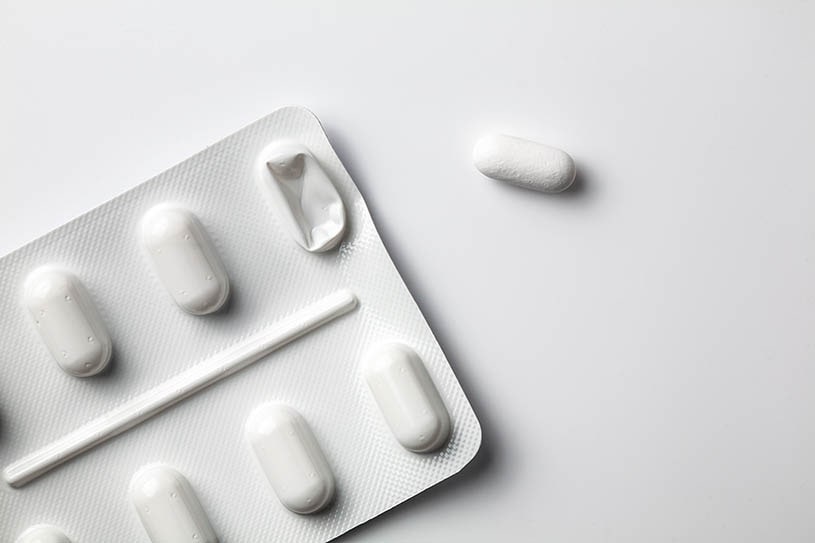
What Is Lisinopril Used For
There are several indications for whose treatment the United States Food and Drug Administration (FDA) has approved use. These include:
- Hypertension(HTN)
- Heart Failure with reduced Ejection Fraction (HfrEF)
- Chronic Kidney Disease (CKD) and Hypertension (HTN)
- Coronary Artery Disease (CAD) and Hypertension (HTN)
- ST-segment Elevation Myocardial Infarction (STEMI)
Lastly, one non-FDA-approved use that has the backing of expert opinion is in the prevention of progression of Diabetic Nephropathy.
Lisinopril For Blood Pressure
The primary or the chief indication for the use of the Lisinopril pill is in the treatment of hypertension in adults and children greater than six years old. It can be used alone(monotherapy) or in combination with other antihypertensive drugs such as diuretics – a combination so frequently used that a separate medication Lisinopril hctz or Hydrochlorothiazide with a brand name Zestoretic was manufactured-, calcium antagonists, and alpha-blocking agents.
The American College of Cardiology Recommends Taking This Medication In Hypertension Which Meets The Following Criteria:
- Patients with diurnal blood pressure out of the office/hospital ≥135mmHg systolic or ≥85mmHg diastolic, or in-office/hospital blood pressure ≥140mmHg systolic or ≥90mmHg. The difference between in-office and out-of-office blood pressure measurements can be related to a phenomenon of “White Coat Hypertension”.
- Patients with an in or out-of-office/hospital blood pressure of more than 130/80mmHg in addition to one or more of the following risk factors: (1) Past medical history of cardiovascular disease; (2) Type 2 Diabetes Mellitus; (3) Chronic Kidney disease; or (4) Age 65 or older.
Although these are the generalized indications for use, the decision on the course of a patient’s hypertension therapy should be made on an individualized basis by a qualified health professional. As such, it is recommended to contact a medical doctor before taking any antihypertensives to determine which Lisinopril alternatives or what combination of antihypertensives will be of maximal help.
Lisinopril in Diabetes
Type 2 Diabetes Mellitus describes a condition characterized by insulin resistance by bodily tissues and progressive deterioration of those pancreatic cells that produce insulin, leading to relative insulin deficiency. Two of the most frequent comorbidities in Diabetics are the presence of hypertension and cardiovascular abnormalities as well as chronic kidney disease, often termed Diabetic Nephropathy. ACEIs, including the Lisinopril pill, are particularly useful in patients with Diabetes mellitus who have hypertension with or without nephropathy. In addition to lowering blood pressure, ACEIs can reduce and prevent the progression of kidney deterioration which is primarily responsible for the reduced life expectancy of patients with Diabetes mellitus. Furthermore, ACEIs can protect against cardiovascular complications of Diabetes mellitus as well.
As always, the decision regarding which medication or a combination of medications will be right for and maximally help with the hypertension should be made only through contact and consultation with a primary care physician as choosing the correct therapeutic regimen requires assessment of a patient’s physiological status, their chronic health conditions, the list of other medications taken, the probability and the likely tolerance for the probable spectrum of side effects experienced as well as numerous other factors. As such it is always recommended to contact a doctor before taking this medication.
Lisinopril Pill Identifier
The Lisinopril pill comes in many dosage forms and formulations. Depending on which brand form of Lisinopril medication is purchased or by which pharmaceutical company this medication is produced, the appearance of the tablets will vary. Below, are the Lisinopril dose forms and appearances supplied by Solco Healthcare U.S., LLC.
2.5 Mg Pill
The drug is white, has capsule-shape form with an imprint H144 on the front side.
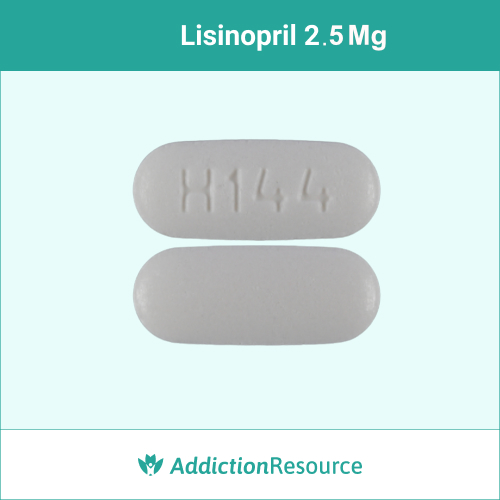
5 Mg Pill
The medication is yellow, with a capsule-shape form and an imprint H145 on it.
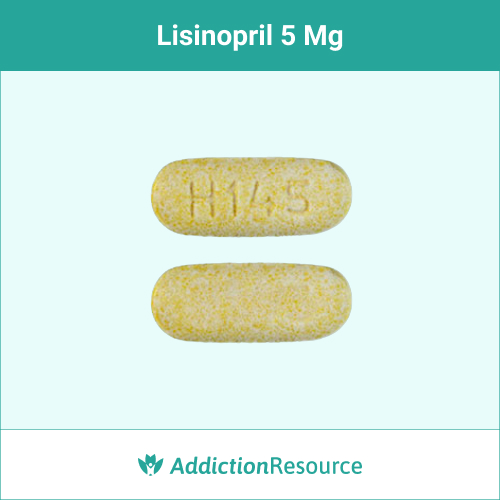
10 Mg Pill
The 10 Mg tablet is pink, capsule-shaped, and has an H146 imprint on it.

20 Mg Pill
The drug is capsule-shaped, has a pink color and an imprint of H147 on it.
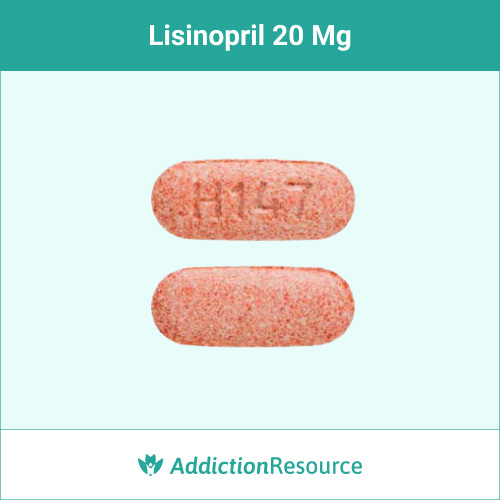
30 Mg Pill
The medication is red, has a capsule-shaped form with an imprint H148 on it.
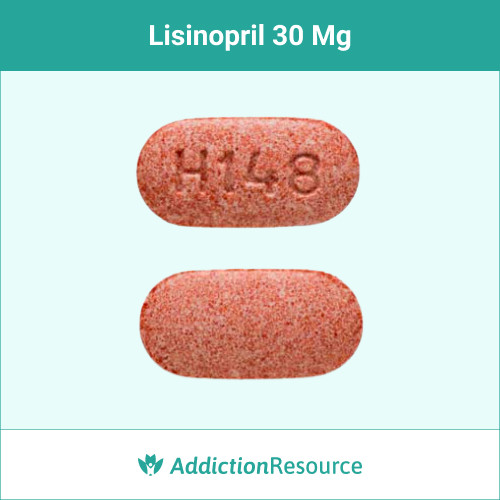
40 Mg Pill
The 40 Mg drug is yellow in color, capsule-shaped with an imprint H149.
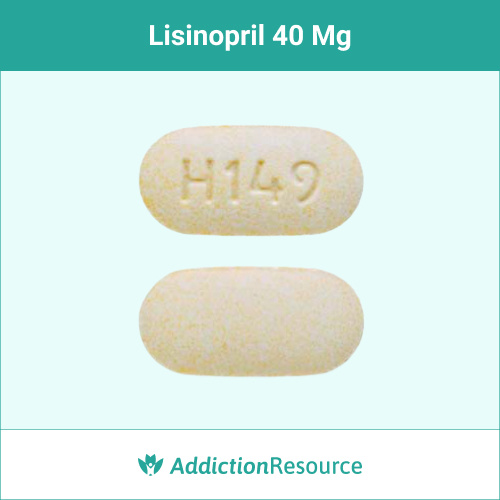
As mentioned many brand forms of this medication are out there, if patients are unsure about the medication they are taking, contact a local pharmacist and they may be able to help with the identification of the drug.
Is Lisinopril Addiction Possible?
ACE inhibitors are not medications that have the potential for abuse. As such Lisinopril abuse and then the development of Lisinopril addiction are not phenomena that are encountered, at least not in the published medical literature. Generally speaking, substances of abuse share some common pharmacokinetic and pharmacodynamic features that increase positive reinforcement and promote dependence. The first and most important feature is the ability of a drug to rapidly enter into the central nervous system and act at the level of those receptors that are known to produce effects such as euphoria, sedation, and anxiolysis which abusers often seek. This medication cannot cross the blood-brain barrier and as such it is incapable of acting on the CNS to produce a state of substance abuse or addiction. Furthermore, even if it were able to enter the CNS, it does not possess the ability to bind to those receptors which are known to be involved in the development of abuse or addiction. However, certain individuals, especially the elderly, may have a psychological dependence as they may falsely think that discontinuing this medication or switching to another class of antihypertensive medication will worsen their condition. Although this cannot be classified as Lisinopril addiction it may certainly lead to Lisinopril abuse.
Therefore, if patients are concerned about the possibility of Lisinopril addiction because they are being prescribed this medication for a prolonged period of time, they can rest assured that it does not have the potential for causing addiction.
Dangers of Lisinopril Abuse
If we consider Lisinopril abuse or Lisinopril addiction as the same concept as incorrect usage of medication then one possible point worth mentioning is what happens if a patient were to take more than the prescribed dose. In the case of acute intoxication or overdose with ACE inhibitors severe hypotension and possible damage to the kidneys will occur. Chronic misuse could theoretically lead to a more predominant presentation of ACE Inhibitor-related side effects.
Prinivil Detox And Lisinopril Addiction Treatment
Stopping Lisinopril is crucial for any person who abuses the drug. It is important to know the risks when asking what Prinivil is. One possible consequence of discontinuing ACEIs, especially if done abruptly, is rebound hypertension. As such discontinuing ACEIs should be performed by a doctor who may substitute them for another class of antihypertensive medication.
Some people also combine this medication with alcohol, which can cause a further increase in the risk of serious drop in blood pressure as both of these agents have hypotensive effects. A detoxification period can help to remove the drug from the patient’s system. Addiction treatment can be used in severe cases. Enrollment in a rehab program can be helpful for a person to avoid abusing the drug in the future too.
Hope Without Commitment
Find the best treatment options. Call our free and confidential helpline
Most private insurances accepted
Page Sources
- Brunton, L., Knollmann, B., & Hilal-Dandan, R. (2017). Goodman and Gilman’s The Pharmacological Basis of Therapeutics, 13th Edition (13th ed.). McGraw-Hill Education / Medical.
- Iqbal AM, Jamal SF. Essential Hypertension. [Updated 2021 Jul 10]. In: StatPearls [Internet]. Treasure Island (FL): StatPearls Publishing; 2021 Jan-. Available from: https://www.ncbi.nlm.nih.gov/books/NBK539859/
- Goyal A, Cusick AS, Thielemier B. ACE Inhibitors. [Updated 2021 Jul 8]. In: StatPearls [Internet]. Treasure Island (FL): StatPearls Publishing; 2021 Jan-. Available from: https://www.ncbi.nlm.nih.gov/books/NBK430896/
- Harris R. (2005). Angiotensin-converting enzyme inhibition in diabetic nephropathy: it's all the RAGE. Journal of the American Society of Nephrology : JASN, 16(8), 2251–2253. https://doi.org/10.1681/ASN.2005060595
- Hegde S, Aeddula NR. Secondary Hypertension. [Updated 2021 Jun 25]. In: StatPearls [Internet]. Treasure Island (FL): StatPearls Publishing; 2021 Jan-. Available from: https://www.ncbi.nlm.nih.gov/books/NBK544305/
- IPR Pharmaceuticals, Inc. (2008). ZESTRILⓇ. Www.Accessdata.Fda.Gov. https://www.accessdata.fda.gov/drugsatfda_docs/label/2009/019777s054lbl.pdf
- Katzung, B. (2017). Basic and Clinical Pharmacology 14th Edition (14th ed.). McGraw-Hill Education / Medical.
- Merck & Co., Inc. (2011, June). PRINIVIL®. Www.Accessdata.Fda.Gov. https://www.accessdata.fda.gov/drugsatfda_docs/label/2011/019558s054lbl.pdf
- Olvera Lopez E, Parmar M, Pendela VS, et al. Lisinopril. [Updated 2021 Jun 15]. In: StatPearls [Internet]. Treasure Island (FL): StatPearls Publishing; 2021 Jan-. Available from: https://www.ncbi.nlm.nih.gov/books/NBK482230/
- "Pioli, M. R., Ritter, A. M., de Faria, A. P., & Modolo, R. (2018). White coat syndrome and its variations: differences and clinical impact. Integrated blood pressure control, 11, 73–79. https://doi.org/10.2147/IBPC.S152761
- Quinn, D. I., Wodak, A., & Day, R. O. (1997). Pharmacokinetic and pharmacodynamic principles of illicit drug use and treatment of illicit drug users. Clinical pharmacokinetics, 33(5), 344–400. https://doi.org/10.2165/00003088-199733050-00003
- Wiener, C., Fauci, A., Hauser, S., Longo, D., Jameson, L. J., Kasper, D., & Loscalzo, J. (2021). Harrison’s Principles of Internal Medicine Self-Assessment and Board Review, 20th Edition (20th ed.). McGraw-Hill Education / Medical.
- Whelton PK, Carey RM, Aronow WS, Casey DE, Collins KJ, Dennison Himmelfarb C, DePalma SM, Gidding S, Jamerson KA, Jones DW, MacLaughlin EJ, Muntner P, Ovbiagele B, Smith SC, Spencer CC, Stafford RS, Taler SJ, Thomas RJ, Williams KA, Williamson JD, Wright JT. 2017 ACC/AHA/AAPA/ABC/ACPM/AGS/APhA/ASH/ASPC/NMA/PCNA Guideline for the Prevention, Detection, Evaluation, and Management of High Blood Pressure in Adults: A Report of the American College of Cardiology/American Heart Association Task Force on Clinical Practice Guidelines. Hypertension. 2018 Jun;71(6):e13-e115.


